FIBER-to-GO!
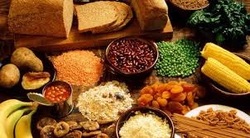 Plant Foods High In Fiber
Plant Foods High In Fiber 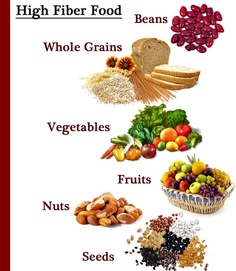
First and foremost, fiber is ONLY found in plant foods (fruits, vegetables, grains, legumes/beans, nuts/seeds). Fiber is the non-digestible part of the plant that passes through the digestive tract without breaking down completely. It can be separated into two categories: insoluble and soluble.
Insoluble Fiber
Insoluble fiber is found within the skin or hull of fruits, vegetables, beans, grains, nuts and seeds. This type of fiber does not break down in water and acts like a brush, sweeping away undigested food stuffs, and adding bulk to stools. Foods containing insoluble fiber include bran, whole grains, raw fruits and vegetables, green leafy vegetables, sprouts, legumes, seeds, and nuts. Examples of foods high in insoluble fiber include: wheat bran, whole grains, corn, nuts/seeds, beans/lentils, berries, grapes/raisins, cherries, pineapple, peaches, melons, citrus fruits, dates, prunes, whole peas, green beans, bell peppers, egg plant, apples, pears, celery, onions, cabbage, broccoli, cauliflower, tomatoes, cucumbers, alfalfa sprouts, and fresh herbs. Since insoluble fiber does not dissolve in water, it is often eliminated from the body still in tact, meaning that you should be able to see the corn, berry seeds, or nuts that you previous ate in your poo!
Soluble Fiber
Soluble fiber is found beneath the skin or hull of fruits, vegetables, grains, and beans. This type of fiber breaks down in water and swells, becoming a soft "gel" like consistency. Soluble fiber is like a soft sponge in the colon, and exerts the ability to regulate the gastrocolic reflex and absorb toxins, diluting them in its watery milleu. Soluble fiber can be found in fruits, vegetables, grains, legumes, and some seeds. Examples of foods high in soluble fiber include: rice, pasta/noodles, oatmeal, barley, french/sourdough bread, quinoa, soy, corn meal, potatoes, carrots, yams, sweet potatoes, squash, mushrooms, avocados, bananas, applesauce, mangoes, and papayas. Foods rich in soluble fiber (compared to insoluble) are the easiest foods on the bowels, making them the best for irritable bowel syndrome (IBS). *For more information about IBS please visit http://www.helpforibs.com/.
Colon Health
Got Constipation? Eat more Plants!
Fiber has some major health benefits that can only be experienced by consuming foods that contain fiber (plant foods). The main role of fiber in the body is to ensure proper bowel functioning and integrity by promoting bowel regularity. Fiber does this by inducing bowel contractions (peristalsis) while it sweeps away undigested food waste and debris in the colon following a fiber rich meal. The constant removal of waste and undigested food from the body is vital for colon health, immune health, and preventing diseases such as colon cancer. High fiber plant foods also decrease the total transit time of food in the colon, allowing waste to be removed quickly and efficiently. Also, the less protein and fat contained in a meal, the faster the food will move through the body. Normal bowel regularity translates to roughly 2-3 bowel movements/day.
Without adequate amounts or the right kinds of fiber, a person may be subject to frequent bouts of constipation or diarrhea, which is typical among low carbohydrate dieters, or anyone on the Standard American Diet (SAD). Foods devoid of fiber include high protein/high fat foods like meat, poultry, fish, dairy, eggs, oils, fried foods, and heavily processed/refined carbohydrates (cookies, cakes, chips, etc). These zero fiber foods require adequate amounts of dietary fiber in order to be properly eliminated from the body. Chronic constipation equals a longer transit time, and a longer transit time can increase risk of chronic disease and poor immune health. Undigested proteins and fats left in the colon will ferment and putrefy in the colon, eventually contributing to tumorous growths and cancers.
Consuming adequate amounts of fluid (aka staying hydrated) is also vital for ensuring proper bowel function. Too much fiber without enough fluid can be a spell for constipation as well. *See water post for more information.
Gut function and Immune Health
Our digestive tract is the gateway to our immune system, as it is the first place the food we consume interacts with our bodies. The colon is laced with probiotic (friendly) gut bacteria that play a major role in the breakdown of foods, absorption of nutrients, and provide a line of defense for the immune system. Without these probiotic bacteria, we become susceptible to allergies, food sensitivities, harmful bacteria, and viruses. Many foods, medications, and lifestyle habits can disturb and kill off our gut flora including alcohol, coffee, caffeine, laxatives, antibiotics, prescription medication, low carb diets, animal products (including yogurt), carbonated beverages, chemical preservatives, calorie restrictive diets, juice cleansing, water fasting, tobacco, recreational drugs, colonics, and stress. Once the colonies of probiotic bacteria in the gut are depleted, symptoms can arise including: constipation, diarrhea, gas, bloating, hives, allergies, rashes, eczema, candida, malnutrition, weight gain/loss chronic colds, and chronic stress. Consistent and adequate consumption of prebiotics or high fiber plant foods are the solution to restoring probiotic bacteria back to healthy levels, and eliminating the symptoms of poor gut health. Prebiotics nourish the probiotic bacteria in the colon so that they can repopulate and restore themselves back to healthy levels. Examples of prebiotics include blueberries, spinach, bananas, sweet potatoes, and rice. Once probiotic bacteria are restored to optimal levels, both gut and immune function become highly efficient.
Blood Sugar Regulation
Fiber is one of the most important factors for ensuring normal blood sugar levels. The fiber within plant foods controls and slows the release of sugar into the blood stream (following a meal), allowing for a gradual and prolonged release of sugar as opposed to a sudden spike in blood sugar, followed by a crash. Most people run into blood sugar issues by consuming large amounts of high sugar, high fat, high protein, low fiber foods on the regular.
Contrary to popular belief, high fat/high protein foods delay the uptake of dietary sugar into the cells, keeping it trapped in the blood stream for extended periods of time, triggering a sustained response from the pancreas to secrete insulin. Under normal conditions (low fat, plant-based diet), ingested sugar requires little to no insulin to transport the sugar out of the blood stream and into the cells for energy production. Insulin-resistance eventually results from sustained high blood sugar (due to excess fat and protein consumption), as the functioning of the pancreas gets exhausted overtime and ceases to secrete insulin. Type II diabetes (or insulin resistance) can easily be reversed by discontinuing the intake of high fat/protein foods, heavily processed/refined carbohydrates, and adopting a plant-based, low fat, high carbohydrate, high fiber dietary lifestyle. *For more information, check out the carbohydrate blog post!
Heart Health and Weight Loss
Fiber has the ability to prevent/reverse heart disease and aid fat loss by expediting the removal of fat from the body. Everyday, small amounts of fat and cholesterol are excreted into the colon via the bloodstream, more-so when following a low fat, plant-based diet combined with regular exercise. Fiber binds to and eliminates the excreted fat and cholesterol, which attributes to a gradual decrease in body fat composition and blood lipid levels over time. The lower the diet is in fat, and the higher the intake of fiber, the more food, waste, and fat can be removed from the body, aiding in keeping the belly flat and body lean. The key to sustained fat loss and cholesterol regulation is consuming a high carbohydrate, high fiber, low fat, plant-based diet. Diets containing excess cholesterol and fat (both saturated and unsaturated) are not necessary for optimal health and are the main contributors towards the development of heart disease, cancer, diabetes, obesity, inflammatory diseases, and hormonal disorders.
How much is ENOUGH fiber?
The American Dietetic Association (ADA) suggests an intake of 25 grams of fiber/day, but this value should be considered a minimum. The more fiber in the diet, the more you will guarantee optimal colon health over time. The best sources of fiber are low fat, plant-based foods such as whole fruits, vegetables, whole grains, and beans. The best dietary approach for ensuring long term, optimal health is a high fiber, high carbohydrate, low fat, plant-based diet. Go to www.cronometer.com to start tracking your fiber intake today!
A Word of Caution: If you are new to a high fiber diet, start small. Increasing dietary fiber too quickly can result in gas, bloating, and cramping. Be sure to consume more water as the fiber increases in your diet!
Eat UP!!
Victoria
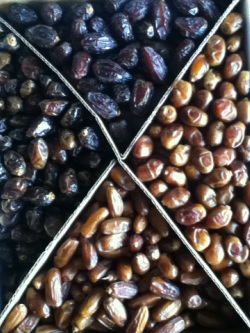




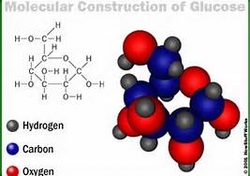
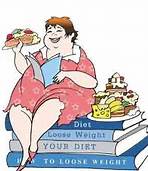
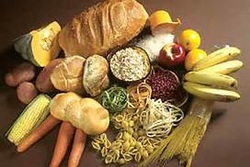
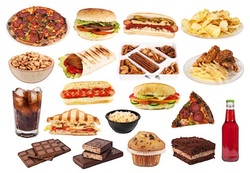




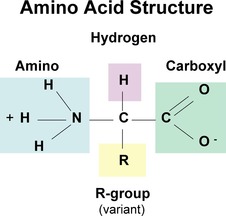
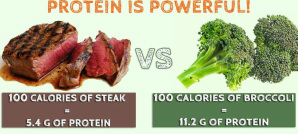
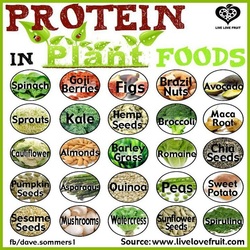

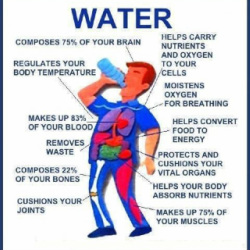
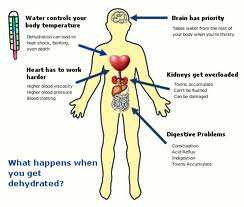
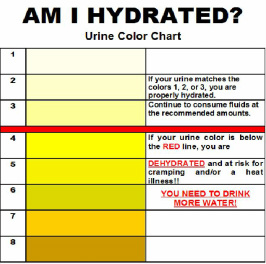


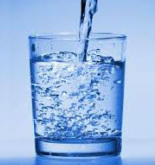


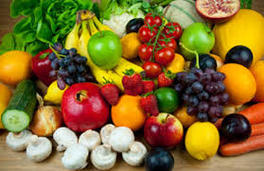


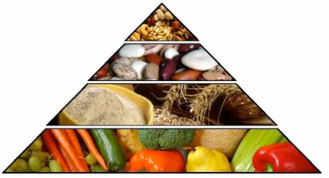
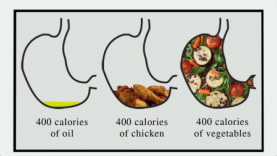
 RSS Feed
RSS Feed
